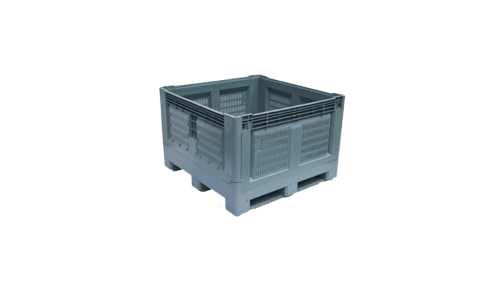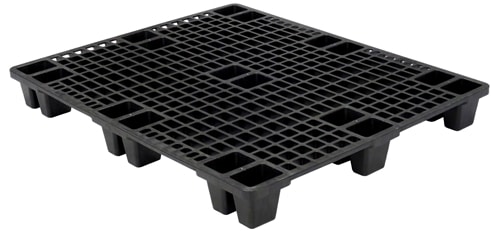

If you’re new to the world of pallets, you’d be forgiven for not knowing there are actually different sizes and types available. While there are standard pallet dimensions, measurements vary between countries which makes international shipping arrangements extra confusing if you don’t know what your options are, to begin with.
Below, we’ll start with the standard pallet size Australia uses. And then we’ll look at other countries and their average pallet size and dimensions.
Standard Pallet Size In Australia
- Australia’s Standard Pallet Size is 1165 mm x 1165 mm.
- The Average Standard Pallet Height in Australia is 150 mm.
Pallets are available in various materials, including commonly used plastic or wood, and most makers conform to size in whichever material they use.
However, although Australia does have a countrywide standard pallet dimension, pallet size can still vary by industry.
This is especially true in industries that rely on pallets and have an associated transport infrastructure set up.
Industries That Make Extensive Use Of Pallets
- Pharmaceuticals
- Chemicals
- Food and beverages
- Automotives
Even within these industries, there is significant sizing variation.
For example, pharmaceutical companies often prefer hygiene pallets at measurements of 1200 mm x 800 mm.
In contrast, chemical suppliers tend to use 1300 mm x 1100 mm.


What Is The Standard Size Of A Pallet In Other Countries?
The most common standard pallet sizes are 48x40x20 inches in the United States. The other standard pallet sizes are 48x48x40 inches in Canada and 48x40x40 inches in the United Kingdom.
Other countries have standard shipping pallet sizes as well, with the European pallet being slightly larger than the U.S. pallet.
Many countries accommodate several sizes, alongside the one they use most commonly.
The following are frequently used shipping pallet dimensions.
| Dimensions | Countries commonly used in |
|---|---|
| 1219 mm x 1016 mm | North America and South America |
| 1200 mm x 800 mm | Europe including the UK |
| 1067 mm x 1067 mm | European Asia, North America |
| 1165 mm x 1165 mm | Australia |
| 1100 mm x 1100 mm | Asia |
| 1200 mm x 1000 mm | New Zealand, Europe, Asia |
Why you need to consider the whole supply chain.
The success of your supply chain relies on ensuring you have the right pallet for your needs and for the other organisations involved.
Understanding where your Australian pallet fits into your global supply chain is key.
Results Of Choosing The Wrong Shipping Pallet Size:
- Longer load and unpack time – where loading or receiving organisations do not have the correct equipment to load quickly, or have to move the goods to another pallet size to continue transportation.
- Issues with warehouse transport, such as forklifts or conveyor belts – many factories have perfectly designed systems where goods move through on automatic conveyors and are easily picked up by the equipment available. Odd sizes can cause these automated systems to fail.
- Difficulty meeting international customs requirements – ISPM 15 is a set of standards designed to reduce the spread of pests through global shipping. Any wooden pallet must be appropriately certified before passing through customs, so it’s crucial you think about how this extra compliance step fits into your supply chain if you aren’t using plastic. Plastic Export Pallets allow you to completely avoid these stringent regulations.
- Hygiene concerns – Especially where food or pharmaceuticals are involved, hygiene is critical. Wooden pallets are particularly susceptible to moisture and mildew, prompting some organisations to use only plastic materials.
ISO Recognised Pallet Dimensions
The ISO recognizes six pallet dimensions commonly used in certain parts of the world.
The International Organisation for Standardisation (ISO) is an independent body that regulates commercial standards across a range of industries to make worldwide trade safe and efficient. In the case of pallets, the ISO recognises six dimensions commonly used in certain parts of the world or in particular industries.
Finding out which pallet size best suits your particular supply chain can save you spending more than you need to, or having trouble getting your goods to their end destination.
If you’re ready to get your plastic pallets ordered, or perhaps you’re still unsure which pallet is best, give our experts a call or email. Our expert pallet suppliers at Eco Pallets are always happy to share more information for your specific needs, and to get your order underway.
Next Article: Pallet Racking Inspection Checklist









